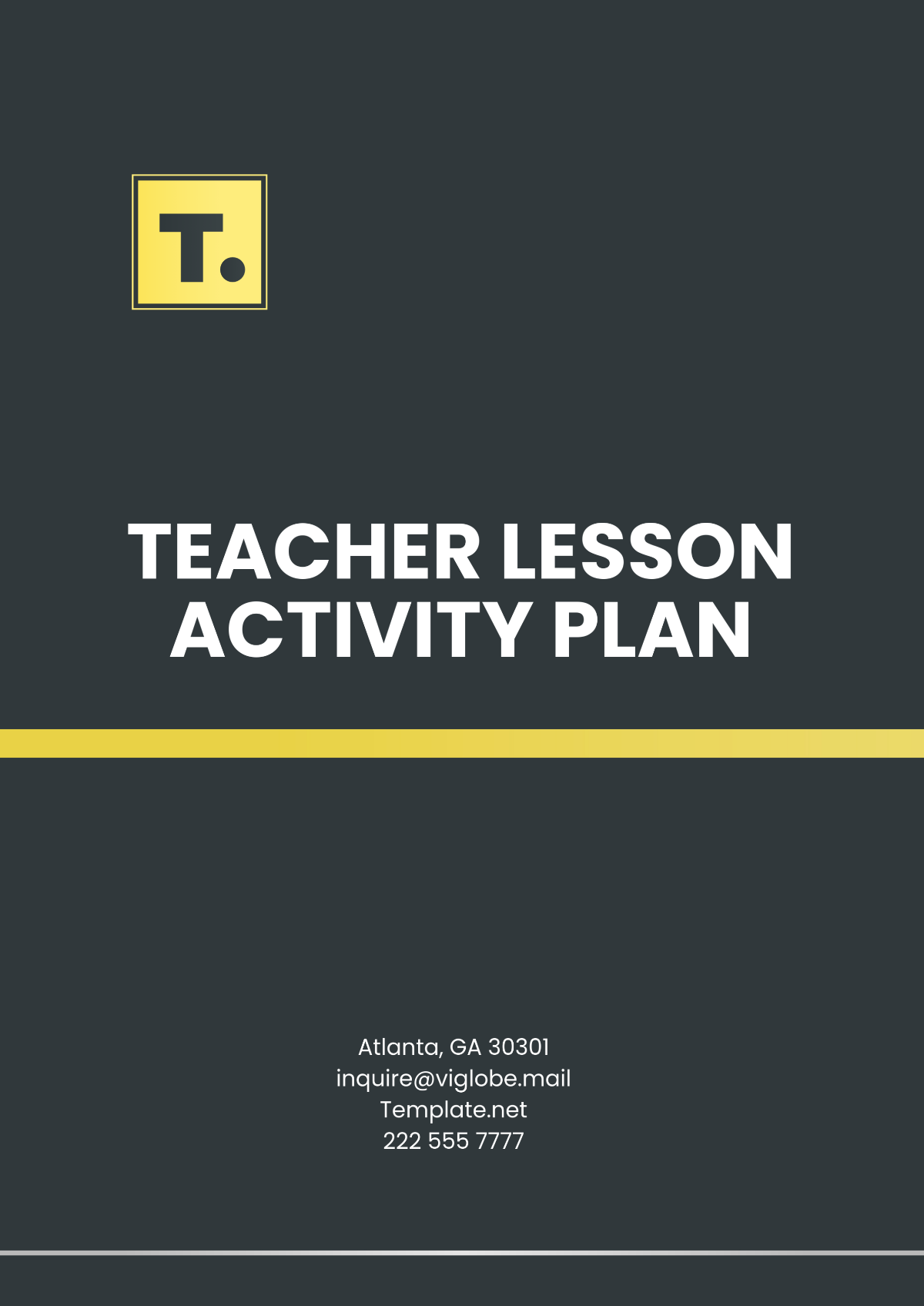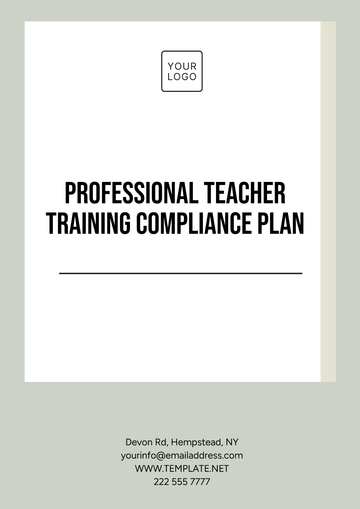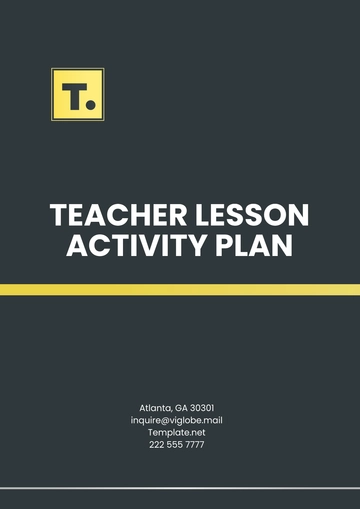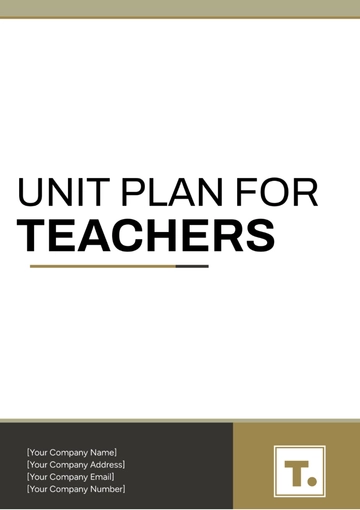Free Teacher Lesson Activity Plan

Subject: Science
Grade Level: 5th Grade
Date: December 13, 2054
Duration: 60 minutes
Lesson Title: The Water Cycle
Learning Objectives:
Objective 1: Students will be able to identify the stages of the water cycle (evaporation, condensation, precipitation, and collection).
Objective 2: Students will be able to explain how the water cycle works in nature.
Objective 3: Students will demonstrate understanding of the water cycle by creating a model.
Materials Needed
Material | Quantity/Description |
|---|---|
Whiteboard & Markers | 1 set for teacher demonstration |
Water | 1 small cup for each student |
Plastic Wrap | 1 piece per student |
Rubber Bands | 1 per student |
Small Rocks | 1 per student (for mountain effect) |
Markers & Paper | 1 set per group |
Key Vocabulary:
Evaporation: The process of water turning into vapor and rising into the air.
Condensation: The process of water vapor cooling down and turning into liquid droplets.
Precipitation: The release of water in the form of rain, snow, sleet, or hail.
Collection: The process where water gathers in rivers, lakes, and oceans.
Lesson Introduction (10 minutes)
Activity 1: Ask students if they have ever seen a puddle disappear after it rains. Discuss where the water goes. Use the whiteboard to write “Water Cycle” and draw a basic circle to begin explaining the stages.
Objective: To introduce the water cycle and generate student interest through discussion.
Procedure:
Begin by explaining the water cycle as a continuous movement of water around the Earth.
Ask students to think about where water goes after it rains, stimulating curiosity and providing a segue into the lesson.
Main Activity (25 minutes)
Activity 2: Hands-on Water Cycle Model
Objective: To engage students in constructing a simple model that demonstrates evaporation, condensation, and precipitation.
Procedure:
Instruct students to fill a clear plastic cup halfway with water.
Place a piece of plastic wrap over the top and secure it with a rubber band.
Place a small rock or pebble on the center of the wrap to create a “mountain” effect.
Have students place their cups under a heat source (e.g., near a window) for 20 minutes and observe.
Discussion/Interaction: Discuss how the heat causes evaporation (the water turning into vapor), and how condensation forms on the plastic wrap (droplets). Discuss what might happen if the room is cooler.
Assessment/Practice (15 minutes)
Activity 3: Water Cycle Quiz (Group Work)
Objective: To assess understanding of the water cycle’s stages.
Procedure:
Split the class into small groups.
Provide each group with a handout of the water cycle diagram and a list of definitions for each stage.
Have the students match the definitions with the correct stage in the cycle.
Methods of Assessment: Collect group responses and provide feedback. Use the quiz as a formative assessment to gauge understanding.
Conclusion (10 minutes)
Wrap-up Activity:
Review the water cycle diagram on the whiteboard, highlighting the stages and their relationship to one another.
Invite students to ask questions or share observations from their water cycle models.
Discussion/Reflection: Ask students how the model helps them understand the process of the water cycle.
Feedback: Praise students for their participation and efforts in the activity.
Extension/Homework:
Extension Activity: Ask students to write a short paragraph describing how the water cycle affects the weather in different seasons.
Homework: Have students draw their own version of the water cycle and label each part.
Notes for the Teacher:
Ensure all students are engaged in group work, providing additional support as needed.
Monitor the models during the activity to ensure all students are observing the changes over time.
- 100% Customizable, free editor
- Access 1 Million+ Templates, photo’s & graphics
- Download or share as a template
- Click and replace photos, graphics, text, backgrounds
- Resize, crop, AI write & more
- Access advanced editor
Elevate your teaching strategies with the Teacher Lesson Activity Plan Template offered by Template.net. This customizable, downloadable, and printable template ensures seamless lesson planning for any subject or grade. Effortlessly editable in our AI Editor Tool, it provides a professional and organized layout tailored to your needs. Streamline your preparation today with this user-friendly resource!
You may also like
- Finance Plan
- Construction Plan
- Sales Plan
- Development Plan
- Career Plan
- Budget Plan
- HR Plan
- Education Plan
- Transition Plan
- Work Plan
- Training Plan
- Communication Plan
- Operation Plan
- Health And Safety Plan
- Strategy Plan
- Professional Development Plan
- Advertising Plan
- Risk Management Plan
- Restaurant Plan
- School Plan
- Nursing Home Patient Care Plan
- Nursing Care Plan
- Plan Event
- Startup Plan
- Social Media Plan
- Staffing Plan
- Annual Plan
- Content Plan
- Payment Plan
- Implementation Plan
- Hotel Plan
- Workout Plan
- Accounting Plan
- Campaign Plan
- Essay Plan
- 30 60 90 Day Plan
- Research Plan
- Recruitment Plan
- 90 Day Plan
- Quarterly Plan
- Emergency Plan
- 5 Year Plan
- Gym Plan
- Personal Plan
- IT and Software Plan
- Treatment Plan
- Real Estate Plan
- Law Firm Plan
- Healthcare Plan
- Improvement Plan
- Media Plan
- 5 Year Business Plan
- Learning Plan
- Marketing Campaign Plan
- Travel Agency Plan
- Cleaning Services Plan
- Interior Design Plan
- Performance Plan
- PR Plan
- Birth Plan
- Life Plan
- SEO Plan
- Disaster Recovery Plan
- Continuity Plan
- Launch Plan
- Legal Plan
- Behavior Plan
- Performance Improvement Plan
- Salon Plan
- Security Plan
- Security Management Plan
- Employee Development Plan
- Quality Plan
- Service Improvement Plan
- Growth Plan
- Incident Response Plan
- Basketball Plan
- Emergency Action Plan
- Product Launch Plan
- Spa Plan
- Employee Training Plan
- Data Analysis Plan
- Employee Action Plan
- Territory Plan
- Audit Plan
- Classroom Plan
- Activity Plan
- Parenting Plan
- Care Plan
- Project Execution Plan
- Exercise Plan
- Internship Plan
- Software Development Plan
- Continuous Improvement Plan
- Leave Plan
- 90 Day Sales Plan
- Advertising Agency Plan
- Employee Transition Plan
- Smart Action Plan
- Workplace Safety Plan
- Behavior Change Plan
- Contingency Plan
- Continuity of Operations Plan
- Health Plan
- Quality Control Plan
- Self Plan
- Sports Development Plan
- Change Management Plan
- Ecommerce Plan
- Personal Financial Plan
- Process Improvement Plan
- 30-60-90 Day Sales Plan
- Crisis Management Plan
- Engagement Plan
- Execution Plan
- Pandemic Plan
- Quality Assurance Plan
- Service Continuity Plan
- Agile Project Plan
- Fundraising Plan
- Job Transition Plan
- Asset Maintenance Plan
- Maintenance Plan
- Software Test Plan
- Staff Training and Development Plan
- 3 Year Plan
- Brand Activation Plan
- Release Plan
- Resource Plan
- Risk Mitigation Plan
- Teacher Plan
- 30 60 90 Day Plan for New Manager
- Food Safety Plan
- Food Truck Plan
- Hiring Plan
- Quality Management Plan
- Wellness Plan
- Behavior Intervention Plan
- Bonus Plan
- Investment Plan
- Maternity Leave Plan
- Pandemic Response Plan
- Succession Planning
- Coaching Plan
- Configuration Management Plan
- Remote Work Plan
- Self Care Plan
- Teaching Plan
- 100-Day Plan
- HACCP Plan
- Student Plan
- Sustainability Plan
- 30 60 90 Day Plan for Interview
- Access Plan
- Site Specific Safety Plan


